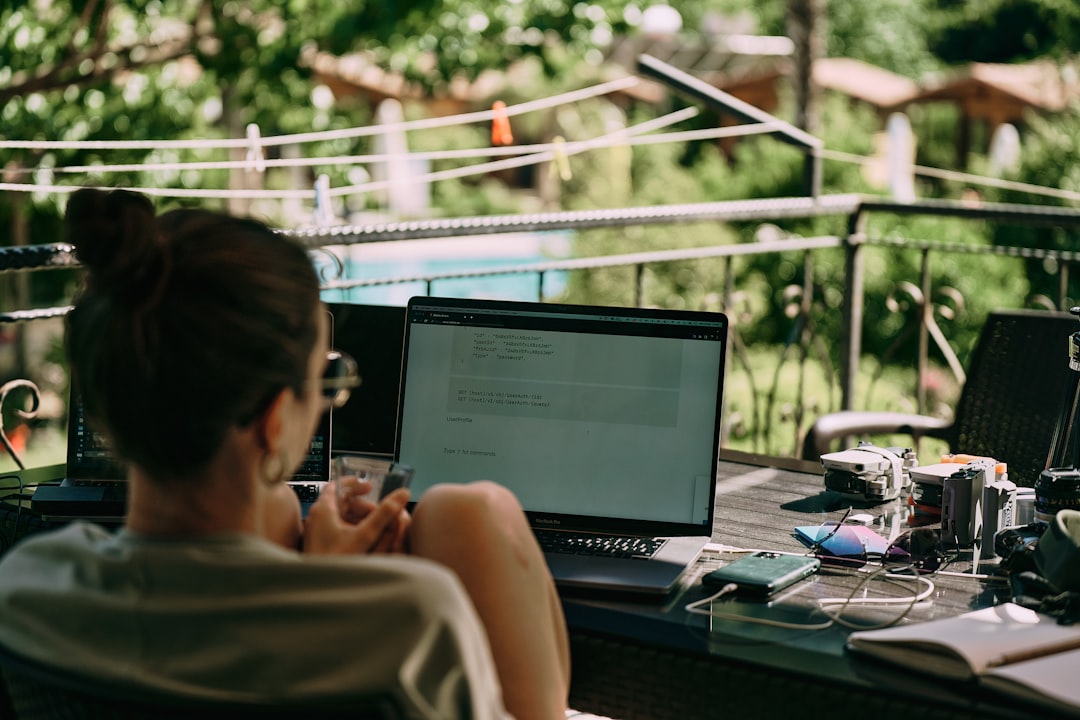Where to Work Remotely in Latin America

Introduction
Latin America has become a magnet for remote workers seeking a blend of affordable living, reliable internet, vibrant culture, and a sense of adventure. From the cobblestone streets of colonial towns to modern metropolises that buzz with tech startups, the region offers a wide spectrum of environments that suit every personality and work style. This guide explores the top destinations across Latin America where digital nomads can thrive, highlighting practical considerations such as coworking spaces, cost of living, visa options, safety, and lifestyle amenities.
Why Latin America Works for Remote Professionals
-
Cost Efficiency – Many cities allow you to enjoy a comfortable lifestyle on a fraction of the budget required in North America or Europe. A decent apartment, meals at local restaurants, and reliable internet can often be covered with $1,000 to $1,500 per month.
-
Time Zone Compatibility – Most of the continent sits within GMT‑5 to GMT‑3, which aligns well with North American business hours and provides a manageable overlap with European teams.
-
Cultural Richness – From samba rhythms in Brazil to Andean festivals in Peru, the cultural calendar is packed with events that make free time as rewarding as work time.
-
Growing Infrastructure – A surge of coworking hubs, international schools, and health services has turned many cities into fully fledged digital‑nomad friendly ecosystems.
-
Visa Flexibility – Several governments now issue short‑term digital‑nomad visas, and many countries allow extended stays on tourist visas with easy extensions.
Below is a curated list of the most compelling places to set up a remote office in Latin America, organized by country and city.
Mexico City, Mexico
Work Environment
Mexico City blends historic architecture with a modern startup scene. Coworking spaces such as WeWork, Ciclope, and Homework provide fast fiber connections, meeting rooms, and community events. Many cafés in neighborhoods like Condesa and Roma Norte also offer reliable Wi‑Fi and a relaxed vibe for solo work.
Cost of Living
- One‑bedroom apartment in a central district: $800‑$1,200 per month
- Meals at mid‑range restaurants: $8‑$15 per dish
- Public transportation (Metro, bus): $0.30 per ride, unlimited monthly pass $30
Visa Options
U.S., Canadian, and EU citizens can stay on a tourist visa for up to 180 days without a fee. Mexico introduced a “Temporary Resident Visa for Remote Workers” that allows stays up to one year, renewable for three years, provided proof of income of at least $2,000 per month.
Lifestyle Highlights
- Cultural Sites – Chapultepec Park, Frida Kahlo Museum, historic center (Zócalo).
- Food Scene – Street tacos, upscale Mexican‑fusion, and an expanding vegan offering.
- Nightlife – Rooftop bars in Polanco, live music in La Lagunilla.
Safety
The city is generally safe in tourist areas, but pickpocketing can occur in crowded markets. Using rideshare apps and staying in well‑lit neighborhoods mitigates most risks.
Medellín, Colombia
Work Environment
Known as the “City of Eternal Spring,” Medellín boasts a temperate climate and a thriving tech community. Coworking spaces such as Selina, Impact Hub, and Atom House provide high‑speed internet, ergonomic furniture, and regular networking events. The El Poblado district is the hub for digital nomads, with many cafés that cater to remote workers.
Cost of Living
- One‑bedroom apartment in El Poblado: $600‑$900 per month
- Meal at a local restaurant: $5‑$10
- Monthly transport pass: $30
Visa Options
Tourist visas allow 90 days, extendable for another 90 days. Colombia also offers a “Migrant Visa for Digital Nomads” that permits stays up to three years with a minimum monthly income of $2,500.
Lifestyle Highlights
- Outdoor Activities – Paragliding over the valley, hiking in Parque Arví.
- Cultural Events – Feria de las Flores in August, street art tours.
- Food – Bandeja paisa, empanadas, and a growing scene of specialty coffee shops.
Safety
El Poblado and Laureles are considered safe for expatriates. Use reputable transportation services after dark and keep valuables out of sight in public places.
Buenos Aires, Argentina
Work Environment
Buenos Aires offers a European‑style ambience with a bustling creative sector. Coworking spaces such as La Maquinita, Urban Station, and WeWork deliver reliable internet and professional environments. The Palermo and San Telmo neighborhoods are popular among remote workers for their cafés and cultural vibe.
Cost of Living
- One‑bedroom apartment in Palermo: $650‑$1,000 per month
- Dinner at a mid‑range restaurant: $12‑$20
- Public transport monthly pass: $30
Visa Options
Tourist visas grant up to 90 days, extendable for another 90 days. Argentina introduced a “Remote Work Visa” that allows stays up to one year for applicants who can prove a minimum monthly income of $1,800.
Lifestyle Highlights
- Arts & Culture – Tango shows, Teatro Colón, numerous galleries.
- Food – Asado, empanadas, and an expanding range of international cuisine.
- Nightlife – Late‑night bars, live music venues, and vibrant street festivals.
Safety
The city is generally safe in central neighborhoods, but pickpocketing can be an issue in tourist hotspots. Avoid walking alone late at night in less populated districts.
Santiago, Chile
Work Environment
Santiago is a modern, well‑planned capital with a strong financial sector. Coworking spaces such as Co‑Work Café, WeWork, and The Court offer high‑speed fiber, private offices, and event programming. The neighborhoods of Providencia and Las Condes are favored for their safety and amenities.
Cost of Living
- One‑bedroom apartment in Providencia: $900‑$1,300 per month
- Meal at a local bistro: $10‑$18
- Monthly transport pass: $60
Visa Options
Tourist visas allow 90 days, extendable for another 90 days. Chile offers a “Temporary Resident Visa for Remote Workers” valid for up to one year, requiring proof of monthly income of $2,300.
Lifestyle Highlights
- Nature – Easy day trips to the Andes, wine tours in the Maipo Valley.
- Culture – Museums, modern art galleries, and a thriving culinary scene.
- Safety – Considered one of the safest capitals in South America.
Safety
Overall low crime rates in central districts. Use official taxis or rideshare apps, especially after dark.
Lima, Peru
Work Environment
Lima’s coastal setting and culinary reputation make it an attractive base for remote workers. Coworking spaces such as WeWork, COWorking, and CoWork Café provide stable internet and professional settings. Miraflores and Barranco are the most popular districts for digital nomads.
Cost of Living
- One‑bedroom apartment in Miraflores: $600‑$900 per month
- Meal at a mid‑range restaurant: $8‑$15
- Monthly transport pass: $30
Visa Options
Tourist visas allow 183 days in a 365‑day period. Peru also offers a “Digital Nomad Visa” that grants up to two years for applicants with a minimum monthly income of $1,500.
Lifestyle Highlights
- Food – World‑class ceviche, fusion restaurants, and a strong street‑food culture.
- Activities – Surfing at Costa Verde, exploring historic sites like Huaca Pucllana.
- Nightlife – Live music in Barranco, rooftop bars with Pacific Ocean views.
Safety
Miraflores and Barranco are safe for tourists. Remain cautious in downtown Lima after dark and avoid displaying expensive items.
Quito, Ecuador
Work Environment
Quito, set high in the Andes, blends colonial charm with a growing tech ecosystem. Coworking spaces such as Co‑Work and Viral provide reliable internet, private rooms, and community events. The neighborhoods of La Floresta and Cumbayá attract many remote workers.
Cost of Living
- One‑bedroom apartment in La Floresta: $500‑$800 per month
- Meal at a local restaurant: $5‑$12
- Monthly transport pass: $25
Visa Options
Tourist visas allow 90 days, extendable for another 90 days. Ecuador introduced a “Digital Nomad Visa” for stays up to one year, requiring proof of monthly income of $1,500.
Lifestyle Highlights
- Historic Center – UNESCO World Heritage site with plazas, churches, and museums.
- Nature – Easy access to volcanic landscapes, cloud forests, and the equatorial line.
- Food – Cuy, hornado, and a variety of fresh fruit markets.
Safety
The historic center is generally safe, but petty theft can occur in crowded areas. Use reputable taxis and avoid walking alone late at night in less touristy neighborhoods.
Montevideo, Uruguay
Work Environment
Montevideo offers a laid‑back coastal vibe combined with a stable political environment. Coworking spaces such as Work&Go, The Office, and Coworking Montevideo provide fast internet and a professional atmosphere. The neighborhoods of Punta Carretas and Ciudad Vieja are favored by digital nomads.
Cost of Living
- One‑bedroom apartment in Punta Carretas: $800‑$1,200 per month
- Meal at a local restaurant: $12‑$20
- Monthly transport pass: $40
Visa Options
Tourist visas allow 90 days, extendable for another 90 days. Uruguay offers a “Remote Worker Visa” for stays up to one year, with a required monthly income of $2,200.
Lifestyle Highlights
- Beaches – Relax on the Rambla, a waterfront promenade that stretches for miles.
- Culture – Tango salons, art galleries, and a vibrant literary scene.
- Safety – Consistently ranked among the safest cities in Latin America.
Safety
Low crime rates, especially in central districts. Use standard safety precautions and keep valuables secured.
São Paulo, Brazil
Work Environment
São Paulo is Brazil’s economic powerhouse, offering a dynamic startup ecosystem. Coworking hubs such as WeWork, Spaces, and Cubo deliver state‑of‑the‑art facilities, high‑speed internet, and networking events. The Vila Madalena and Itaim Bibi districts are popular among remote professionals.
Cost of Living
- One‑bedroom apartment in Vila Madalena: $900‑$1,400 per month
- Meal at a mid‑range restaurant: $12‑$25
- Monthly transport pass: $120
Visa Options
Tourist visas allow 90 days, extendable for another 90 days. Brazil introduced a “Digital Nomad Visa” valid for up to one year, requiring proof of monthly income of $2,500.
Lifestyle Highlights
- Cultural Institutions – São Paulo Museum of Art (MASP), Ibirapuera Park.
- Food – Feijoada, sushi, and a booming street‑food scene.
- Nightlife – Live music venues, rooftop bars, and a bustling club scene.
Safety
Certain neighborhoods have higher crime rates. Stick to well‑known districts, use rideshare services, and avoid displaying expensive electronics.
Cartagena, Colombia
Work Environment
Cartagena’s historic walled city provides a picturesque setting for remote work. Coworking spaces such as La Casa del Libro, Selina, and Co‑Work offer reliable Wi‑Fi and a community of travelers. The Getsemaní and Bocagrande areas are especially popular.
Cost of Living
- One‑bedroom apartment in Getsemaní: $550‑$850 per month
- Meal at a local restaurant: $6‑$12
- Monthly transport pass: $30
Visa Options
Tourist visas allow 90 days, extendable for another 90 days. Colombia’s “Digital Nomad Visa” permits stays up to three years with a minimum monthly income of $2,500.
Lifestyle Highlights
- Historic Charm – Colorful colonial architecture, cobblestone streets, and forts.
- Beaches – Playa Blanca, Bocagrande beach promenade.
- Food – Fresh seafood, coconut rice, and Caribbean‑inspired dishes.
Safety
The walled city is safe during daylight hours. Exercise caution after dark, especially in less crowded streets, and use reputable transportation.
Salvador, Brazil
Work Environment
Salvador blends Afro‑Brazilian culture with a laid‑back coastal atmosphere. Coworking spaces such as Impact Hub Salvador, WeWork, and Cafeteria 5 provide good internet and collaborative environments. The Pelourinho and Barra neighborhoods attract many remote workers.
Cost of Living
- One‑bedroom apartment in Barra: $600‑$950 per month
- Meal at a local restaurant: $8‑$15
- Monthly transport pass: $60
Visa Options
Tourist visas allow 90 days, extendable for another 90 days. Brazil’s remote‑worker visa applies here as well, with the same income requirements.
Lifestyle Highlights
- Culture – Capoeira performances, historic churches, and vibrant festivals.
- Beaches – Porto da Barra, Itapuã.
- Food – Moqueca, acarajé, and a variety of tropical fruits.
Safety
Pelourinho can be crowded; keep an eye on belongings. Use rideshare apps after dark and avoid isolated beaches at night.
Antigua, Guatemala
Work Environment
Antigua’s UNESCO‑listed colonial center offers a serene backdrop for remote work. Coworking spaces such as Selina, Co‑Work Antigua, and Impact Hub provide strong Wi‑Fi and a creative community. The city’s cafés, many with garden patios, are ideal for solo work sessions.
Cost of Living
- One‑bedroom apartment in central Antigua: $500‑$800 per month
- Meal at a local restaurant: $5‑$12
- Monthly transport pass: $20
Visa Options
Tourist visas allow 90 days, extendable for another 90 days. Guatemala launched a “Digital Nomad Visa” that permits stays up to one year, requiring a minimum monthly income of $1,500.
Lifestyle Highlights
- Architecture – Colorful facades, volcanic backdrop, and cobblestone streets.
- Outdoor Activities – Hiking Pacaya volcano, coffee plantation tours.
- Food – Pepian, kak'ik, and fresh market produce.
Safety
Antigua is generally safe, but petty theft can happen in crowded markets. Keep valuables secure and use reputable transportation.
Panama City, Panama
Work Environment
Panama City’s skyline reflects its status as a financial hub. Coworking venues such as WeWork, Selina, and Co‑Work provide excellent connectivity and professional amenities. The neighborhoods of Casco Viejo and Punta Paitilla are popular among remote workers.
Cost of Living
- One‑bedroom apartment in Casco Viejo: $900‑$1,300 per month
- Meal at a mid‑range restaurant: $12‑$22
- Monthly transport pass: $50
Visa Options
Tourist visas allow 180 days. Panama offers a “Short‑Stay Visa for Remote Workers” valid for up to nine months, requiring proof of monthly income of $3,000.
Lifestyle Highlights
- Panama Canal – Visit the Miraflores Locks and learn about engineering marvels.
- Nightlife – Rooftop bars, live music venues, and a growing craft‑beer scene.
- Safety – Generally safe in business districts and tourist areas.
Safety
Casco Viejo can attract pickpockets; stay aware of surroundings and use secure bags.
Asunción, Paraguay
Work Environment
Asunción is an emerging destination for budget‑conscious digital nomads. Coworking spaces such as Co‑Work Asunción, WeWork, and Mundo Coworking provide reliable internet and community events. The neighborhoods of Villa Morra and Carmelitas are favored for their safety and amenities.
Cost of Living
- One‑bedroom apartment in Villa Morra: $450‑$750 per month
- Meal at a local restaurant: $5‑$10
- Monthly transport pass: $15
Visa Options
Tourist visas allow 90 days, extendable for another 90 days. Paraguay introduced a “Remote Worker Visa” that permits stays up to two years, with a minimum monthly income of $2,000.
Lifestyle Highlights
- Cultural Sites – Palacio de los López, historic downtown.
- Riverfront – Walks along the Paraguay River promenade.
- Food – Sopa paraguaya, chipa, and hearty stews.
Safety
The city’s central districts are safe for expatriates. Avoid less illuminated areas after dark and use rideshare services.
Santiago de los Caballeros, Dominican Republic
Work Environment
While Santo Domingo is the capital, Santiago de los Caballeros offers a quieter, affordable alternative with a growing coworking scene. Spaces like Co‑Work Hub and Selina provide stable internet and networking opportunities. The neighborhoods of Los Jardines and Ciudad Universitaria attract remote workers.
Cost of Living
- One‑bedroom apartment in Los Jardines: $400‑$650 per month
- Meal at a local restaurant: $6‑$12
- Monthly transport pass: $30
Visa Options
Tourist visas allow 30 days, extendable for another 30 days. The Dominican Republic has a “Digital Nomad Visa” that allows stays up to one year, requiring proof of monthly income of $1,800.
Lifestyle Highlights
- Cultural Events – Carnaval de Santiago, local music festivals.
- Nature – Close to the Central Mountain Range and waterfalls.
- Food – Mangu, sancocho, and a variety of tropical fruits.
Safety
Santiago is generally safe, but practice standard precautions in crowded markets.
Summary of Key Considerations
| Factor | What to Look For | Typical Range in Top Cities |
|---|---|---|
| Internet Speed | At least 20 Mbps download, stable connection for video calls | 30‑100 Mbps in most coworking spaces |
| Cost of Living | Housing, food, transport, coworking membership | $1,000‑$2,000 per month for a comfortable lifestyle |
| Visa Flexibility | Ability to stay 6‑12 months without frequent border runs | Tourist visa extensions, dedicated digital‑nomad visas |
| Safety | Low violent crime, reliable police presence, safe neighborhoods | Most top destinations have safe central districts |
| Community | Regular events, meet‑ups, language exchange | Active expat and nomad groups in most cities |
| Lifestyle | Access to culture, outdoor activities, food scene | Diverse options from beach to mountain to urban nightlife |
Practical Tips for Remote Workers in Latin America
- Secure a Local SIM Card – Data plans are inexpensive and often faster than international roaming. Providers like Claro (Colombia, Brazil), Movistar (Chile, Peru), and Tigo (Panama) offer prepaid options.
- Banking & Payments – Open a multi‑currency account with services such as Wise or Revolut to avoid high conversion fees. Some countries have limited ATM networks; keep a backup cash reserve.
- Health Insurance – International health plans that cover Latin America are advisable. Many providers include tele‑medicine options, which can be a lifesaver in remote regions.
- Language Basics – Learning key phrases in Spanish or Portuguese improves daily interactions and builds rapport with locals. Even basic greetings go a long way.
- Time Management – Align work hours with your client’s time zone, but also carve out time to explore. Many coworking spaces host “focus hours” that help maintain productivity.
- Safety Practices – Use rideshare apps instead of hailing taxis on the street, especially at night. Store valuables in hotel safes or lockable luggage.
Conclusion
Latin America presents a compelling mix of affordability, cultural richness, and modern infrastructure that makes it an ideal playground for remote professionals. Whether you prefer the bustling streets of Mexico City, the mountain air of Medellín, the historic charm of Quito, or the ocean breeze of Cartagena, each destination offers a unique set of advantages that can enhance both work and leisure. By considering factors such as internet reliability, cost of living, visa options, safety, and community vibe, you can select the perfect base that aligns with your personal and professional goals. Pack your laptop, brush up on your Spanish or Portuguese, and set out to experience the diverse tapestry of Latin America while staying productive and inspired.
Random Posts

Productivity Hacks for Entrepreneurs on the Move
Discover lightweight, adaptable productivity hacks that let traveling entrepreneurs juggle calls, deadlines and wellbeing without chaos, using structured flexibility, smart tools, and daily habits for on the go success.
2 months ago

Top Remote Work Destinations and Their High Tech Coworking Spaces
Discover the world's best remote-work hotspots and the high-tech coworking spaces that power them, from sunny beaches to mountain towns, each offering fast internet, inspiring design and vibrant community.
1 month ago

Legal Checklist for the Modern Nomad Lifestyle
Navigate the nomad life with confidence: a step-by-step legal checklist covering visas, taxes, business structure, banking, insurance, data protection and IP, so you can focus on work and adventure.
1 month ago

Top Digital Nomad Havens with Insider Culture Guides
Discover the best digital nomad havens with reliable WiFi, cost of living facts, visa tips and insider cultural guides that help you work, explore and blend in like a local.
2 weeks ago

Ultimate Checklist for Choosing a European Nomad Destination
Use our ultimate checklist to pick the ideal European nomad city by comparing cost, visa rules, internet speed, lifestyle vibe, safety and community for a smart, hassle free move.
5 days ago
Latest Posts

Essential Software Every Remote Professional Should Use
Master remote work with essential tools: instant messaging like Slack, high definition video calls such as Zoom, and asynchronous voice apps. Streamline communication, stay connected and boost productivity.
1 day ago

Mastering Remote Work Productivity for Digital Nomads and Freelancers
Learn proven habits, tools, and tactics that help digital nomads and freelancers stay focused, deliver quality work, and maintain a sustainable lifestyle while traveling the world.
1 day ago

Tech‑Friendly European Towns Perfect for Remote Living
Discover Europe’s best small towns where fast internet, affordable living and vibrant tech communities let you work remotely while soaking up historic charm, lakeside views or mountain air.
1 day ago